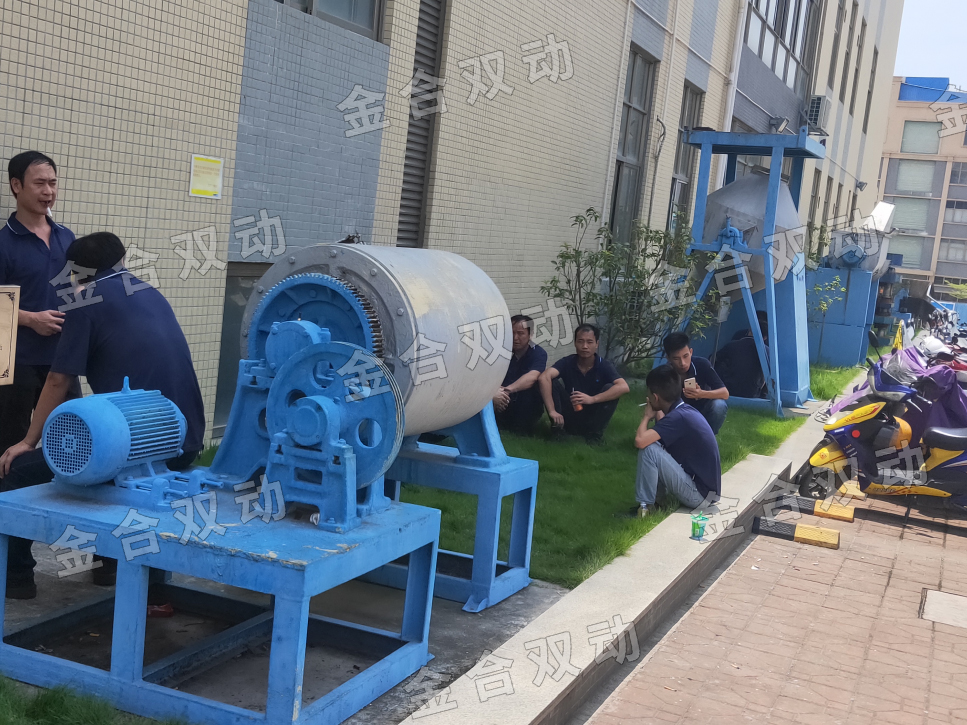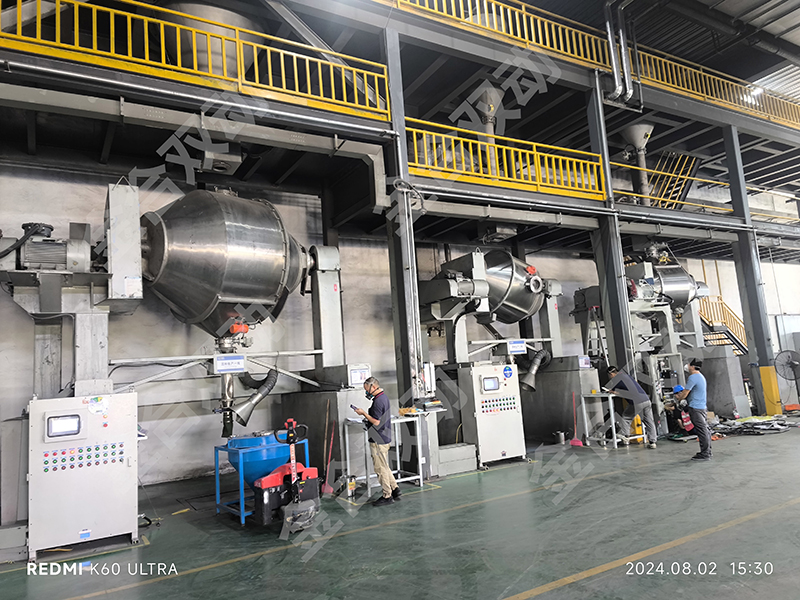Soft magnetic industry: Soft magnetic ferrite materials are magnetic materials used in electronic and electrical equipment, and are usually made of soft magnetic ferrite materials. It features excellent magnetic permeability and low hysteresis loss, and is widely used in new energy inductors, new energy high-frequency transformers, and high-power photovoltaic transformers. Single and three-phase reactors, power frequency special transformers, UPS charging, data centers, charging piles, wind energy, photovoltaic, outdoor energy storage devices, on-board sensors, etc.
Soft magnetic production process: melting alloy powder - mixing - coating - mixing - pressing and forming - sintering - finished product.
The product series include: iron-silicon series alloys, iron-aluminum series alloys, iron-silicon-aluminum series alloys, etc.
Among them, the powder mixing process is an indispensable step. The uniformity of powder mixing determines the quality of the final product. Previously, most enterprises in this industry used traditional double-cone mixers and V-type mixers. The powder coated by customers had very good fluidity. When mixed with new stearic acid, due to the light specific gravity, easy agglomeration and poor fluidity of zinc stearate powder, the traditional mixer only used the single principle of gravity diffusion mixing. The mixing principle of powder in the material barrel was convection and diffusion. There was no forced shearing and opening to break up the powder inside, which led to agglomeration of the mixed powder. Moreover, the hard acid and pungent part of the light powder kept floating inside the barrel and did not completely mix with the main powder. After 50 minutes of mixing, the powder only achieved macroscopic uniformity.
There are professional testing methods for the quality of soft magnetic products: for each batch of products, a first sample is made to test the inductance. Usually, the quality of one sample seems acceptable, but the stability of the inductance of the batch of products is required. The second point is to look at the inductance (L value) of the product. The inductance fluctuation of this batch of products should be as small as possible and must not exceed the tolerance. The products made by traditional mixers have very large fluctuations in inductance and fail to meet the requirements of customers.
Our dual-motion mixer operates on the principle of achieving two major functions: gravity diffusion mixing and forced shearing mixing. It can achieve macroscopic uniformity - that is, allowing the powder to roll up and down and circulate left and right for uniform diffusion and mixing. It can also repeatedly interweave and shear the particles at the microscopic level of the powder in multiple layers and directions, achieving refined forced mixing. Therefore, the uniformity of the mixture can reach the ideal state of macroscopic uniformity and microscopic ultra-fine uniformity.
The various series of traditional mixers that have been phased out by them:
 The dual-motion automated production line put into use in the factory:
The dual-motion automated production line put into use in the factory:
